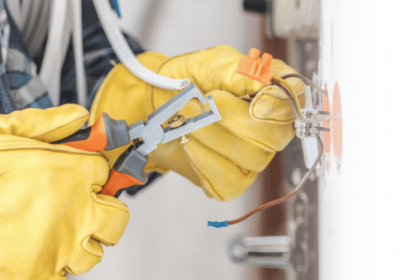If you bought a home during a high-interest rate environment, it’s wise to prepare for either a mortgage refinance or a recast. Interest rates have been gradually coming down since their highs of 2022, and I suspect millions of existing homeowners will eventually be able to reduce their monthly mortgage payments.
After writing my post on not being in a rush to pay off my adjustable-rate mortgage before it resets, I realized the period after the reset is similar to a recast without having to pay any fees or do any paperwork. As a result, I wanted to explain what a mortgage recast is and why an ARM continues to be my preferred mortgage product.
Since 2003, I’ve been refinancing my mortgages whenever interest rates have dropped. However, with mortgage rates staying stubbornly high and more people facing higher rates, the practice of recasting mortgages is likely to become more popular.
What Is A Mortgage Loan Recast?
A mortgage recast is a process that allows borrowers to reduce their monthly mortgage payments by making a large, lump-sum payment toward the principal balance of their loan. The minimum lump-sum payment is usually at least $5,000, but varies depending on the lender.
Unlike refinancing, a recast does not change the interest rate or the term of the loan. Instead, the lender recalculates the monthly payments based on the new, lower principal balance, spreading the remaining balance over the existing loan term. Here are the key points about a mortgage recast:
- Principal Reduction: The borrower makes a significant payment toward the mortgage principal.
- Lower Monthly Payments: The lender recalculates the monthly payments based on the reduced principal, resulting in lower payments for the remainder of the loan term.
- Same Interest Rate and Term: The interest rate and the length of the loan term remain unchanged.
- Cost: There is typically a fee for a mortgage recast, but it is generally lower than the cost of refinancing.
Example Of A Mortgage Recast
To give you a better idea of a how a mortgage recast works, here’s an example using a $1,000,000, 30-year fixed mortgage with an interest rate of 6.5%. For post-pandemic homebuyers, a 6.5% rate is relatively common. But with mortgage rates not dropping quickly, recasting is becoming a more popular option.
Monthly Payment Calculation
Using the standard mortgage formula, the monthly payment (excluding taxes, insurance, etc.) for a $1,000,000 loan at 6.5% over 30 years is approximately $6,320.37.
Mortgage Recast Scenario
Let’s assume after 5 years, the borrower decides to make a lump-sum payment of $200,000 toward the principal balance.
Before Recast
- Original Loan Amount: $1,000,000
- Monthly Payment: $6,320.37
- Remaining Principal After 5 Years: Approximately $938,387.38
Lump-Sum Payment
- Lump-Sum Payment: $200,000
- New Principal Balance: $738,387.38 ($938,387.38 – $200,000)
After Recast
- Interest Rate: 6.5% (unchanged)
- Remaining Loan Term: 25 years (since 5 years have already passed)
New Monthly Payment Calculation
Recalculating the monthly payment based on the new principal balance of $738,387.38 at 6.5% over the remaining 25 years:

So, after the recast, the new monthly payment would be approximately $5,148.92.
Summary Of Recast
- Before Recast: $6,320.37 per month on a $1,000,000 loan.
- After Recast: $5,148.92 per month on a $738,387.38 loan (after $200,000 lump-sum payment).
This recast reduces the borrower’s monthly mortgage payment by about $1,171.45, or 18.53%. The amortization period is on the same 30-year schedule, with 25 years remaining.
Paying down your loan by $200,000 is a significant financial move. Although I have several investment ideas for $200,000, a 6.5% mortgage rate is relatively high compared to the past 20 years and to average historical returns on various risk assets. Plus, getting a guaranteed 6.5% return on $200,000 is quite attractive.
Therefore, recasting a $1,000,000 mortgage by paying it down by $200,000 after five years isn’t a bad idea, provided you still have plenty of liquidity afterward. If mortgage rates go down dramatically, you can always refinance. Boosting your cash flow by $1,171.45 is substantial.
However, be careful not to become house-rich and cash-poor. Without sufficient cash reserves after the recast, you might feel overly stressed, which would negate one of the primary benefits of recasting—financial relief.
Finally, the recast fee is likely around $500 if your lender offers this option. Hence, the fee is quite reasonable compared to paying mortgage refinance fees the multi-thousands of dollars.
What Type Of Loans Are Eligible For Recasting?
Loan recasts are allowed on conventional, conforming Fannie Mae and Freddie Mac loans, but not on FHA mortgage loans or VA loans. FHA and VA loans already give borrowers a lot of benefits such as a lower downpayment and subsidized lower interest rates.
Some lenders recast jumbo loans, negative amortization loans, and option ARMS, but consider them on a case-by-case basis. Simply ask your lender what their recasting conditions are.
In order to qualify for a loan recast, you must be current on your loan payments, and have the cash necessary to pay down your principal balance. A credit check and an appraisal are not necessary.
Advantages of Mortgage Recasting
There are essentially four main advantages of mortgage recasting versus mortgage refinancing.
- Reduced Payment. By paying down a lump sum, you will reduce your monthly payments. If you are on a fixed income, foresee declining income, or plan to retire, recasting may be appropriate.
- No Appraisal Required. Unlike a home refinance, a loan recast does not require an appraisal. The average cost of a home appraisal can range between $500 – $2,000.
- No Credit Check Needed. Loan recasts generally do not require credit approval. This is great if you have suboptimal credit. With a credit score of below 760, you likely won’t quality for the lowest refinance rate. As a result, a recast is the easier way to lower your monthly payment.
- Pay Down Your Loan Quicker. Not only may mortgage recasting be cheaper and easier to do, you should end up paying down your loan quicker. The first reason is because you’re paying a lump sum to recast. The second reason is your mortgage remains on the same amortization schedule. Refinancing generally means starting with a new amortization schedule, e.g. 30 years all over again.
Disadvantages of Mortgage Recasting
Recasting a mortgage sounds pretty good right? Like with everything, there are disadvantages or tradeoffs. Here are some disadvantages of mortgage recasting to be aware of.
- Requires Lots of Cash. The minimum amount to recast a mortgage is usually at least $5,000. However, if you have to pay a recast fee of $500, you probably want to pay down $50,000 or more of the loan to make it worthwhile. Using cash to recast a mortgage means you won’t be able to invest that cash in any other instrument that could provide a higher rate of return. As a result, the lower your mortgage rate, the less inclined you should be to recast a mortgage. To decide how much of your cash to allocate towards paying down debt versus investing, follow my FS-DAIR system.
- Doesn’t Reduce Mortgage Term. A loan recast will not shorten your loan term; it will follow your original amortization schedule. The only way to reduce your mortgage term is to refinance from a 30-year fixed to a 15-year fixed loan or pay off your principal sooner through extra payments.
- Your Interest Rate Stays The Same. A recast lowers your monthly payments, but it doesn’t lower your interest rate. In a rising interest rate environment, recasting is better than refinancing. Conversely, in a declining interest rate environment, if you can refinance to a new mortgage at least 0.25% lower with all costs baked it, it may be better to refinance.
Now that you know all about recasting, you can see how letting an ARM reset is similar to a recast, just without the fees or hassle. Let’s use my 7/1 ARM resetting in December 2026 as an example.
Over the next 18 months, I will naturally pay down $35,000 of the loan through monthly mortgage payments. This means my principal loan balance will fall to $381,000 from $416,000.
Even if my mortgage rate resets to 4.25% from 2.25%, my monthly payment will decrease by $569 to $2,245 a month due to additional principal payments over the years. The mortgage during the reset will be amortized over 23 years, just like if it was recast, rather than 30 years if I refinanced the mortgage.
If I wanted to lower my monthly payment further, I could pay off a lump sum of principal any time before the new mortgage rate begins after the reset, like a recast.
For example, I could pay down $50,000 of the loan the last month before the mortgage rate resets. If I do, the monthly payment on my new $331,000 mortgage at 4.25% would only be $1,881. Strategically, I would wait to pay down $50,000 of principal for as long as possible, given my rate is only 2.25%.
Having Strong Cash Flow And An ARM Is A Good Combo
If you have ample cash or generate substantial cash flow, opting for a lower interest rate ARM can be more advantageous than a 30-year fixed-rate mortgage. With your financial strength, the security of fixed payments over 30 years may not be necessary. You can easily use your cash reserves to pay down extra principal and potentially lower your monthly payments if desired
One of the advantages of an ARM is avoiding a recast fee upon reset. You also don’t need to do any paperwork. Instead, you simply adjust to the new payment once it takes effect.
If you choose an ARM, it’s wise to develop a habit of paying down extra principal when you have surplus cash flow. This practice increases your chances of securing a lower monthly mortgage payment when your ARM resets.
Reader Questions
Have you ever recast a mortgage before? If so, what were the reasons why? What was the fee to recast and how long did the process take?
To invest in real estate without a mortgage, check out Fundrise. Fundrise operates diversified funds that mainly invest in the Sunbelt region, where valuations are lower and yields are higher. The company manages over $3.5 billion for over 500,000 investors taking advantage of the long-term demographic shift to lower-cost areas of the country.
Financial Samurai is a six-figure investor in Fundrise funds, and Fundrise is a long-time sponsor of Financial Samurai. Our outlook on real estate is quite similar. For most investors, investing in a fund is the optimal way to go.







